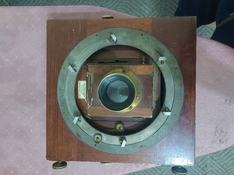chandrastudios
Member
im starting my large format photography from this really old camera from birmingham.
im starting out shooting with paper then slowly move on to negs and maybe even glass plates.
im seeking for advice of do's and don'ts so if anyone of you have any suggestions for me let me know.
im starting out shooting with paper then slowly move on to negs and maybe even glass plates.
im seeking for advice of do's and don'ts so if anyone of you have any suggestions for me let me know.












